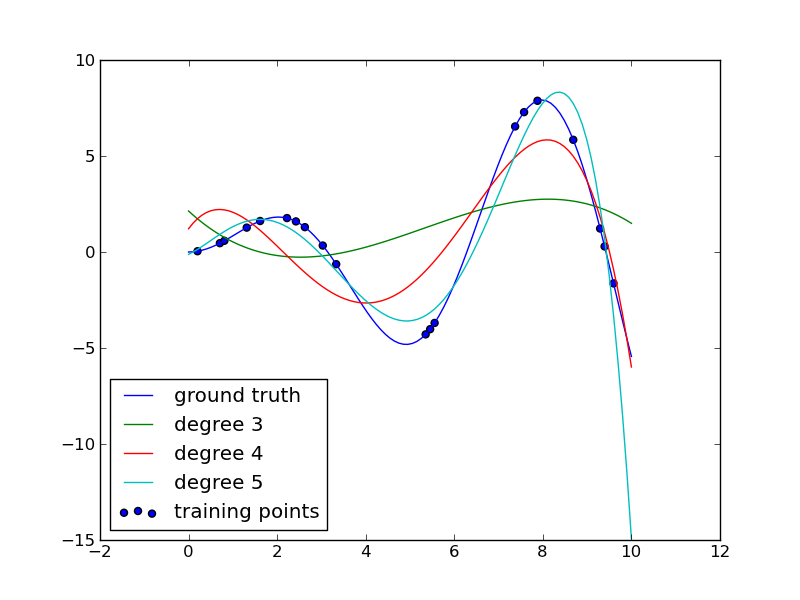Polynomial interpolation¶
This example demonstrates how to approximate a function with a polynomial of degree n_degree by using ridge regression. Concretely, from n_samples 1d points, it suffices to build the Vandermonde matrix, which is n_samples x n_degree+1 and has the following form:
- [[1, x_1, x_1 ** 2, x_1 ** 3, ...],
- [1, x_2, x_2 ** 2, x_2 ** 3, ...], ...]
Intuitively, this matrix can be interpreted as a matrix of pseudo features (the points raised to some power). The matrix is akin to (but different from) the matrix induced by a polynomial kernel.
This example shows that you can do non-linear regression with a linear model, by manually adding non-linear features. Kernel methods extend this idea and can induce very high (even infinite) dimensional feature spaces.

Python source code: plot_polynomial_interpolation.py
print __doc__
# Author: Mathieu Blondel
# License: BSD Style.
import numpy as np
import pylab as pl
from scikits.learn.linear_model import Ridge
np.random.seed(0)
def f(x):
""" function to approximate by polynomial interpolation"""
return x * np.sin(x)
# generate points used to plot
x_plot = np.linspace(0, 10, 100)
# generate points and keep a subset of them
x = np.linspace(0, 10, 100)
np.random.shuffle(x)
x = np.sort(x[:20])
y = f(x)
pl.plot(x_plot, f(x_plot), label="ground truth")
pl.scatter(x, y, label="training points")
for degree in [3, 4, 5]:
ridge = Ridge()
ridge.fit(np.vander(x, degree + 1), y)
pl.plot(x_plot, ridge.predict(np.vander(x_plot, degree + 1)),
label="degree %d" % degree)
pl.legend(loc='lower left')
pl.show()
